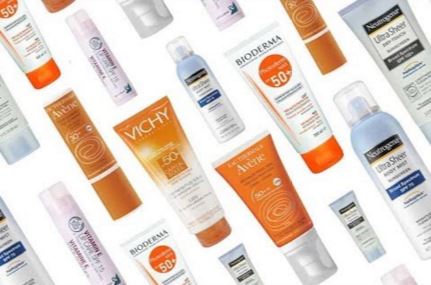
In an earlier article, I had talked about the importance of wearing sunscreens on a daily basis.
Honestly, if you only cleanse your face properly and wear a sunscreen daily, your skin will actually be in a very healthy state.
Whether you know it or not, the sun really deals very harshly with our skin on a daily basis, never minding the fact that most of our skincare ingredients also contain photosensitive ingredients that further increase the chances of damage to the skin by the sun on a daily basis.
So it is indeed a wise decision to consider wearing some form of sun protection to avoid such damaging effects from the sun on our skins.
It is also a fact, that dark skinned people are not immune to the damaging effects of the suns ray to our skin.
Therefore the question is no longer why should I wear a sunscreen?, but rather what type of sunscreen should I consider?
 Types of sunscreen
Types of sunscreen
- Physical sunscreen
- Chemical sunscreen
Physical Sunscreen
There are two types of physical sunscreen… Zinc oxide and titanium oxide. These are called physical sunscreens because they block the sun rays from reaching the skin by reflecting them away from the skin surface, thereby preventing any damage to the skin.
In the past these natural sunscreens had the reputation of making people look pasty white after application, however, there are now micronized zinc oxide and titanium oxide particles which are not as whitening as the former non micronized ones (non nano zinc oxide) which are usually sold under the trade name Zinclear.
Formulating with zinc oxide can be quite tricky as zinc oxide particles tend to form aggloromates which might affect its ability to provide proper protection for the skin. This can however be overcome by purchasing pre mixed/ dispersed zinc oxide/titanium oxide solutions or using very high shear mixers in the laboratory to properly and evenly disperse the zinc oxide pigments.
Chemical Sunscreens
These type of sunscreens work by absorbing the UV rays from the sun thereby preventing it from reaching the skin and causing any skin damage.
They are less whitening and most are easy to incorporate into sun screen formulations. Some of the commonly used ones include aminobenzoic acid, avobenzone, homosalate, octinoxate etc
Currently, 17 active sunscreen ingredients are approved by the FDA. The most recently approved ingredient is ecamsule (Mexoryl SX), approved in 2006. The FDA provides the approved concentration of each ingredient, and this often is included on the product’s label.
Here is a list of sunscreens and the type of UV ray they shield the skin from as well as the maximum concentration you can have in a product.
| Active Ingredient / UV Filter Name | Maximum FDA-approved Concentration, % | Range of Protection |
| Aminobenzoic acid | 15 | UVB |
| Avobenzone | 3 | UVA1 |
| Cinoxate | 3 | UVB |
| Dioxybenzone | 3 | UVB, UVA2 |
| Ecamsule (Mexoryl SX) | 3 | UVA2 |
| Ensulizole (Phenylbenzimidazole Sulfonic Acid) | 4 | UVB |
| Homosalate | 15 | UVB |
| Meradimate (Menthyl Anthranilate) | 5 | UVA2 |
| Octocrylene | 10 | UVB |
| Octinoxate (Octyl Methoxycinnamate) | 7.5 | UVB |
| Octisalate (Octyl Salicylate) | 5 | UVB |
| Oxybenzone | 6 | UVB, UVA2 |
| Padimate O | 8 | UVB |
| Sulisobenzone | 10 | UVB, UVA2 |
| Titanium dioxide | 25 | Inorganic/Physical |
| Trolamine salicylate | 12 | UVB |
| Zinc oxide | 25 | Inorganic/Physical |
Join me tomorrow as we discuss more on how to choose the best sunscreen for you!

 Types of sunscreen
Types of sunscreen